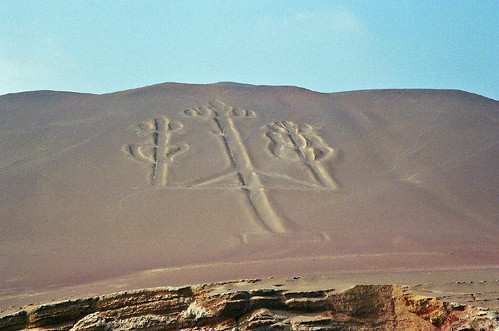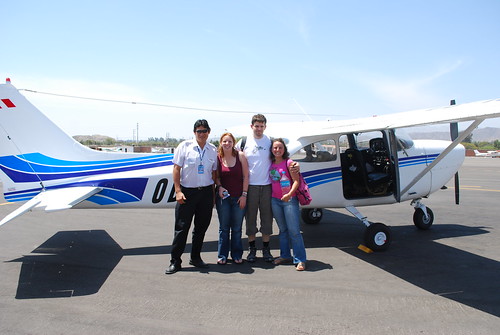There are dozens of versions of the origin of the drawings presented in Paracas, this from ancient navigators and pirates (who would have used to guide the seas), and of course, no shortage of theories about extraterrestrial beings. They speak a strange and mysterious connection between the candelabra and the most famous Nazca lines, less than 200 km.

Photography by Bruno Girin
The best known are The Monkey, Hummingbird, The Whale, The Spider and The Astronaut, although the figures recorded so far total more than 300. The mythical Nazca lines can now visit Cessna flying from the airport in Pisco, just 15 km from Paracas, on a trip to clearly shorter than if you leave Lima (the route through the Pan American Highway, also not is particularly an amusement park).
And when, after flying for 40 minutes a succession of dunes and clouds and more clouds, finally appears the first picture. Getting to see them from the sky in the plane is a show, of course, witness live and direct. And while some may feel dizzy with the twists and tilts which makes the pilot (for passengers on both sides of the windows to see about 15 drawings), the experience is such that can hardly be forgotten.
The amazing thing is that these strange ditches, some really huge (The Alcatraz and El Loro, for example, measures 200 meters each), can only be observed in its entirety from the air, which has raised all sorts of questions.
Is that the origin of the images, discovered in 1927 and a World Heritage Site since 1994, yet little is known. The most compelling scientific argument (we will not waste time with esoteric versions continue to circulate) said it would be the largest astronomical calendar of the world, and one of the earliest manifestations of advanced mathematics and physics. It would have been made by the Nazca culture between 300 BC and 700 of this era, and its construction were used rudimentary tools like ropes and stakes.

Photography by procsilas
This was the explanation that drove the German researcher Maria Reiche, who devoted his life to studying this riddle engraved on the floor. The Madwoman of the Broom, was called, because in the early 40’s moved into the wilderness equipped with a tape measure, a compass, a ladder and a broom. With the latter swept to death covering the sand lines, while convincing the government to restrict public access to the area.
«I have defined my life until the last minute of my existence is to Nazca. Time will be little to explore the wonder that enclose the pampas, I will die,» confessed Reiche, also called the Lady of the Desert, and kept his word. He died in 1998, when the lines had been discovered and admired by the world, largely thanks to his tireless work and dedication.
Flamingos, beaches and flags:
They say that General Jose de San Martin was inspired by the Flemish Paracas to create the Peruvian flag, after noting the intense pink color of these birds with their wings, let see a white stripe in the center. In fact, are held here each September the landing of Argentine hero.
Paracas National Reserve, rich in flocks of flamingos, was created in 1975 in one of the most desert on the Peruvian coast, and is the only protected marine area in the country.
It covers an area of 335,000 hectares, of which 200,000 are in the Pacific Ocean. On land, sandy beaches and calm seas bright as La Mina, Yumanque, Playon or Lagunillas are preferred by Lima visiting the area for sports such as windsurfing, kite surfing and sandboarding.

Photography by Ivan Mlinaric
Useful Information:
– Walk to the islands – Paracas is 260 km south of Lima. The boat trip to the Ballestas islands costs $ 28 per person, lasts 2 hours and has two daily departures at 8.20 and 10.20.
– For private boat cost, the cost is $ 270.
– The private plane fly over the Nazca Lines, is made in a Cessna Grand Caravan, which cost $ 250 per person.
Bon voyage!
Leave a Reply
You must be logged in to post a comment.
Recent Comments